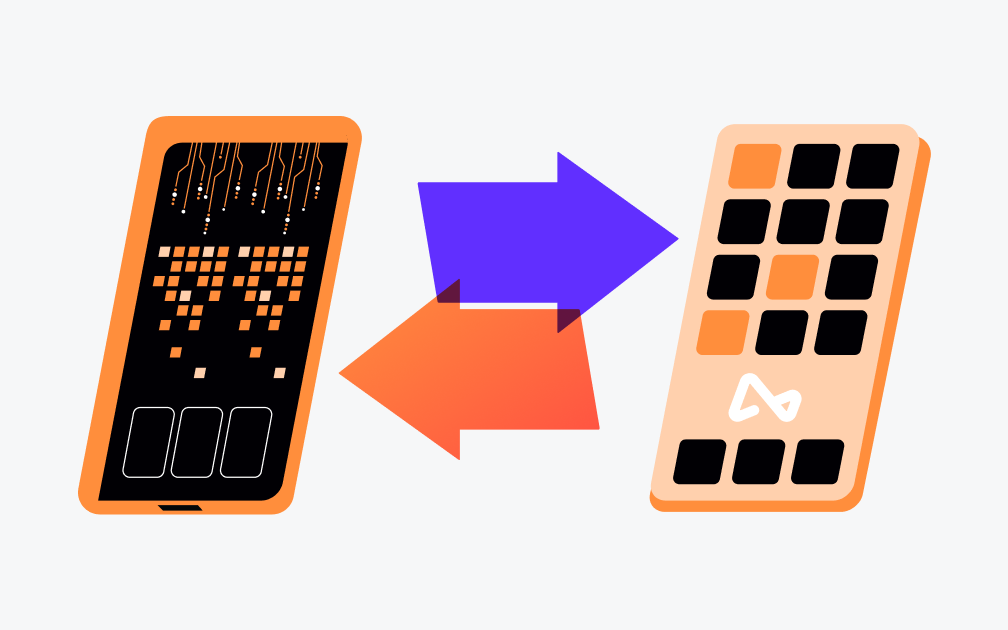The easiest way to calculate an FX rate

Exchange rates are part and parcel of paying international clients, suppliers and employees. But calculating the relative value of one currency against another can be tricky business if you’re new to the game.
In this article, we’ll show you the simplest way to read and calculate an exchange rate. Wherever you are in the world, you can use this formula to know what a fair FX rate looks like and how to read the market to make an exchange at the right time.
The challenges in calculating an FX rate
One of the first things to be aware of is that the exchange rates are constantly changing. They fluctuate throughout the day depending on the rise and fall of the market and levels of demand. So any FX rate you might see in the morning may be gone by lunchtime.
Another challenge you’ll face is that different providers may show different rates. Whether you’re using a foreign exchange provider or a bank, these suppliers typically won’t let you access the true exchange rate. Why? They’ve got to make a profit on it, so the rate you’ll get offered will usually come with a mark-up. Or, dare we say, additional fees?
Finding and reading FX rates
There are plenty of modern financial tools out there which you can use to read the true market FX rates. You’ve got money exchange websites and service providers, websites for the big banks. And, best of all, the rapidly growing crop of forex trading apps and platforms that offer real-time FX information.
When reading these FX rates, you’re trying to determine what your local currency is worth in foreign currency. Meaning, you’re estimating what one unit of your currency is worth in another currency.
It’s pretty straightforward to read FX rates. For example, if you see an exchange rate for AUD/GBP of 0.54, you’re essentially getting £0.54 for every AUD 1 that you convert to British Pounds.
The formula for how to calculate an FX rate
The formula for calculating an exchange rate is simple.
Exchange rate = your starting figure (in your local currency) divided by the final amount (in the new currency)
For example: Say you’re exchanging AUD 1,000 into USD. You receive USD 721 in return. Using the formula: 1,000 / 724 = 1.38. You can see the exchange rate is 1.38 AUD to 1 USD.
Understanding the exchange rate is just as simple. All you need to do is divide your local currency figure by the FX number.
Using the previous example: let’s say you see the exchange rate as 1.38 AUD to USD, and you’re looking to buy a new piece of office equipment for USD 724 with a budget of AUD 1,000.
Divide your AUD by the exchange rate of 1.38, and you see that you’ve got USD 724 to spend (which, conveniently, is exactly what the equipment costs!).
It’s quite a simplified way to look at it — but it works.
How are exchange rates determined?
In Australia, we have what’s known as a floating exchange rate. This means that exchange rates aren’t set; they’re determined by the market of supply and demand for foreign currencies. Fluctuations in the exchange rate are caused by changes in local interest rates, international competition and the overall relative outlook of different world economies.
With a floating exchange rate like this, you can expect to see more frequent, and more volatile, fluctuations between currencies.
How does inflation affect the exchange rate between two countries?
Inflation is often closely linked to exchange rates and can have a big impact on potential FX rates.
In theory, a reduction in the exchange rate can increase inflation. If your local currency reduces in value, the cost of imported goods and services increases too, driving up local prices and causing inflation.
There’s usually quite a lag between movements in the exchange rate and their impacts on the local economy, so high inflation isn’t necessarily an immediate concern.
But FX rate movements, on the other hand, happen all the time. That’s because the market itself is volatile, so you can expect to see differences in FX rates throughout the day.
The bottom line
If you’re trying to understand how to calculate an exchange rate, it’s a massive money saver to arm yourself with as much information as you can get. Understanding how to calculate an FX rate can help businesses identify areas to reduce international spend and avoid inflated FX rates.
There’s also an easier way to navigate FX rates.
At Airwallex, we help you get the best exchange rate, every time. We’ve built our own foreign exchange engine which means you don’t have to go to the banks, or other money exchange channels, to calculate your rates.
Put Airwallex to the test. Try us for free.
With Airwallex, you get direct access to the interbank exchange rate, meaning you get the best FX rate possible to make the most of your money. Better yet, we don’t charge you any conversion fees. You’ll only receive a small 0.3% or 0.6% margin on top of the interbank exchange rate.
Get in touch with us today to start leveraging our beat-the-bank rates and discuss how we can help you get the best rate for your business.
Share
Related Posts

What is SWIFT?
•6 minutes

A message from our Co-founder and CEO
•7 minutes
Cookies on the Airwallex website
We use cookies to give you a better experience on our website. If you continue without changing your settings, we’ll assume that you are happy to receive cookies. However, if you would like to, you can change your cookie any time here
